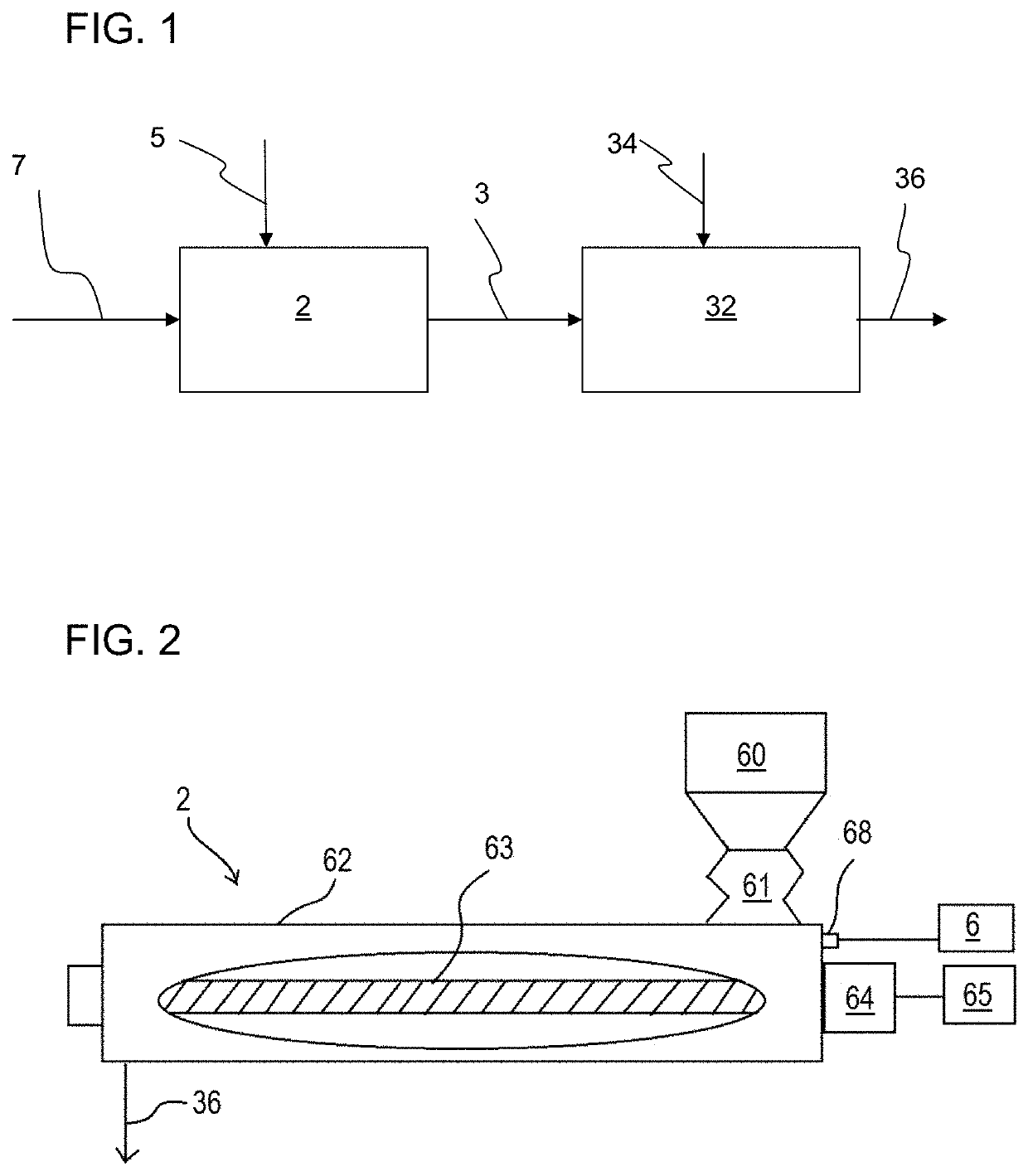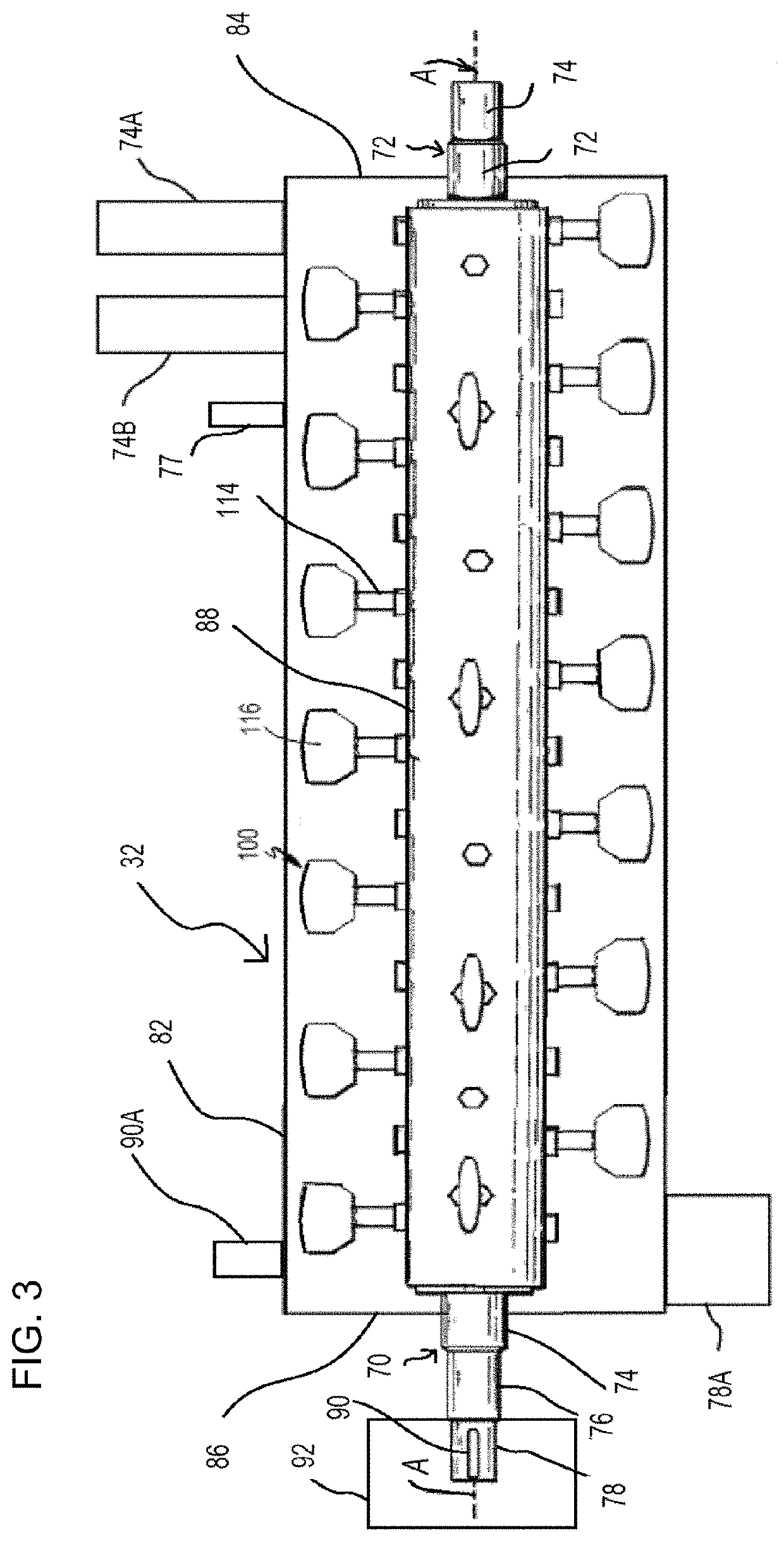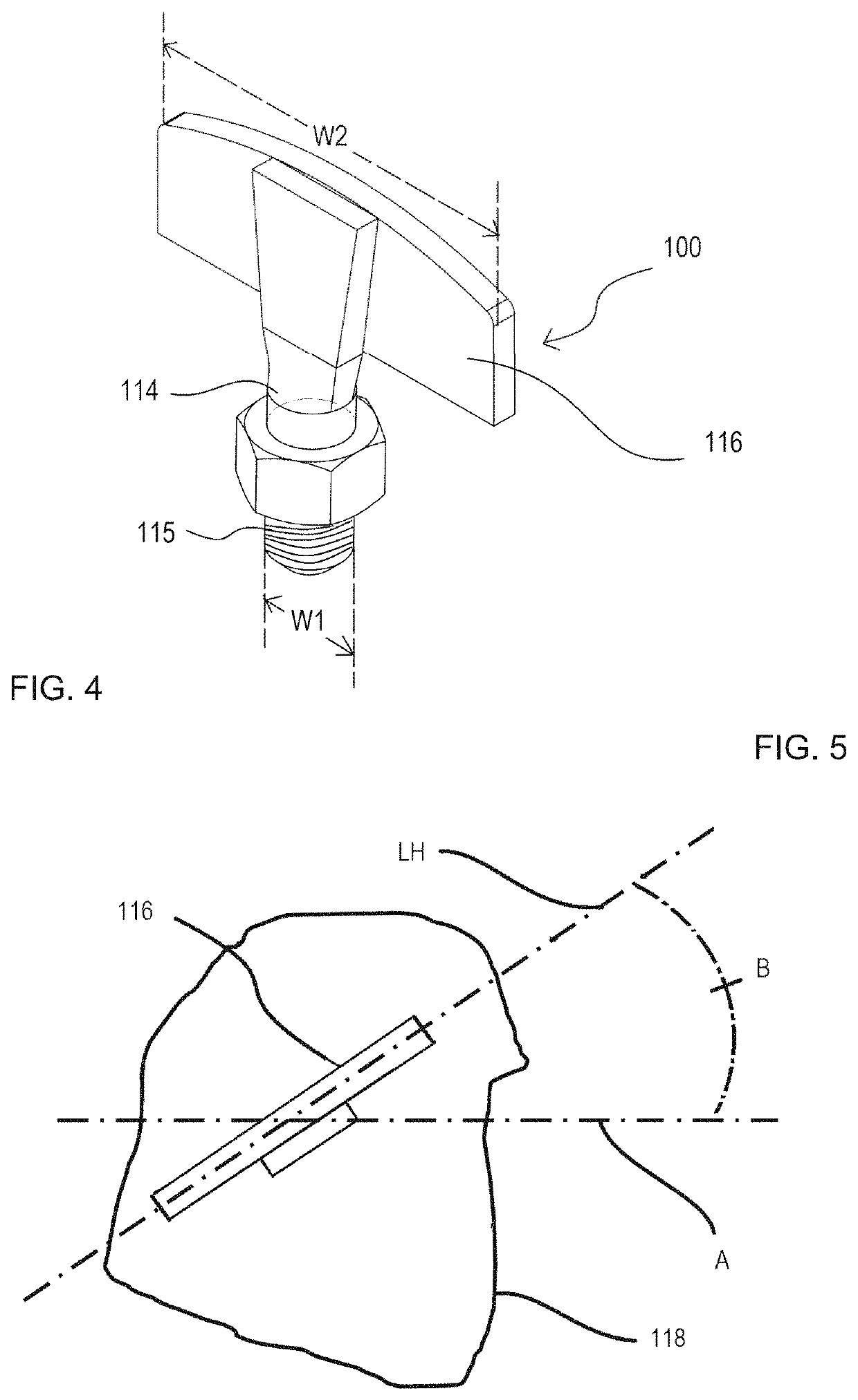Continuous methods of making fiber reinforced concrete panels
a technology of fiber reinforced concrete and continuous methods, which is applied in the direction of manufacturing tools, transportation and packaging, rotary stirring mixers, etc., can solve the problems of fiber lumping and balling during the mixing operation, the viscosity of cementitous mixtures for extruding, and the inability to meet the requirements of use, so as to facilitate the formation of fiber reinforced concrete panel products, and eliminate the need for time-consuming and expensive panel finishing
- Summary
- Abstract
- Description
- Claims
- Application Information
AI Technical Summary
Benefits of technology
Problems solved by technology
Method used
Image
Examples
example 1
[0507]FIG. 39 shows a photograph of a slump patty 101 of a fiber reinforced cementitious slurry mixture made using the method of the present invention employing a slurry mixer followed by a separate fiber-slurry mixer.
example 2
[0508]FIG. 40 is a thickness profile of a ¾″ thick panel of fiber reinforced cement produced by the method of the present invention employing a slurry mixer followed by a separate fiber-slurry mixer. It shows consistent thickness achieved when a single layer was deposited. The fiber-slurry mixture contained Portland cement, gypsum, and glass fibers.
PUM
| Property | Measurement | Unit |
|---|---|---|
| thick | aaaaa | aaaaa |
| particle density | aaaaa | aaaaa |
| median diameter | aaaaa | aaaaa |
Abstract
Description
Claims
Application Information
 Login to View More
Login to View More - R&D
- Intellectual Property
- Life Sciences
- Materials
- Tech Scout
- Unparalleled Data Quality
- Higher Quality Content
- 60% Fewer Hallucinations
Browse by: Latest US Patents, China's latest patents, Technical Efficacy Thesaurus, Application Domain, Technology Topic, Popular Technical Reports.
© 2025 PatSnap. All rights reserved.Legal|Privacy policy|Modern Slavery Act Transparency Statement|Sitemap|About US| Contact US: help@patsnap.com



